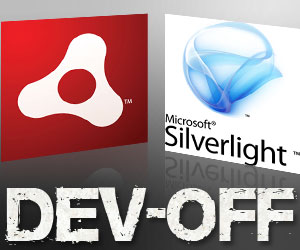 Looking back at the last couple of years of software development, there are only a few applications that have had a breakthrough in numbers of users: FireFox, Trillian, Skype, Thunderbird, to mention a few. The UGC sites that have grown over the last couple of years (MySpace, Flickr, Facebook, digg, YouTube, to mention a few) can offer a great experience to their users, yet they only work when you are online (and in cases have a good internet connection) and they do not integrate with one’s desktop (other than the “upload file/image” feature).
Looking back at the last couple of years of software development, there are only a few applications that have had a breakthrough in numbers of users: FireFox, Trillian, Skype, Thunderbird, to mention a few. The UGC sites that have grown over the last couple of years (MySpace, Flickr, Facebook, digg, YouTube, to mention a few) can offer a great experience to their users, yet they only work when you are online (and in cases have a good internet connection) and they do not integrate with one’s desktop (other than the “upload file/image” feature).
This is where single-site browsers were/are trying to bridge the gap. They are installed on your desktop or in your dock an once started they give you a browser-like experience, but customized to the specific website they were downloaded from. Elements that won’t be needed (like the address or navigation bar) are hidden. A very good example is the Gmail browser. This is also where my interest into the subject came from: how can we offer our clients something more “personal” or “customized to their needs or brand?”
Mozilla Prism (which had its first debut in 2006 under the name “WebRunner” and was launched by Mozilla Labs in Oct 2007) is a platform to create desktop-based apps from online applications. For example, with Prism you can turn Google calendar into its own desktop application which you could start from your desktop in its own SSB. Okay, this is a very short run-down of Prism, the main reason being that Prism allows anyone to download it and use it to fit to their needs.
Since this weblog is about considering development ideas (and progress) for B2B and B2C sites we need to talk about more proprietary software applications, which is where AIR and Silverlight come in. [I am considering talking about Prism at a later date].
Adobe AIR was first presented to the public in March 2007 (back then under the name Apollo) and was released as AIR in June of the same year. It is based on the open-source rendering engine called WebKit (the same that is being used by Safari and the iPhone) and supports Flash (ActionScript 3.0), CSS, HTML and JS natively. Additinally, you can style the interface in any way you would want, be it round, wavy, the possiblities are almost endless, making it ideal to customize the interface to the company’s / client’s specific needs. The installation of an AIR application is very straightforward, just install the AIR runtime (which is available for Windows as well as Mac, with Linux support coming soon) followed by the AIR application in question and within minutes you can enjoy the application.
Adobe’s CS3 web suite is all you need to get started: get hold of DreamWeaver, Flash or Flex and off you go (provided you know the aforementioned languages somewhat).
In our office I held a presentation about AIR and its capabilities. After the presentation a discussion arose about whether to pursue AIR, Silverlight (our devs are .net developers), or both. The plan was to develop an application with the following specifications on both platforms:
- Photo gallery
- Gallery information coming from a web-gallery of our development site (aspx, .net, XML)
- Tied into Flickr
- Needs to update itself if new photos are added to a gallery (including a note of sorts to indicate the update)
- Ability to comment on photos
I will write updates about this dev-off once we begun development.
I have just finished working on the information architecture, designs and flash for a client of ours, and since the client has such a big UGC integration we were thinking about a couple of apps for them afterwards: the gallery from above would definetly come in handy, an RSS reader for latest offers or updates to your tour, an offline blogging app which would synch to the site once you’re back online. Its just trying to find the time to actually sit down and spec them out – and selling them to the client! Right then, back to marketing 101.